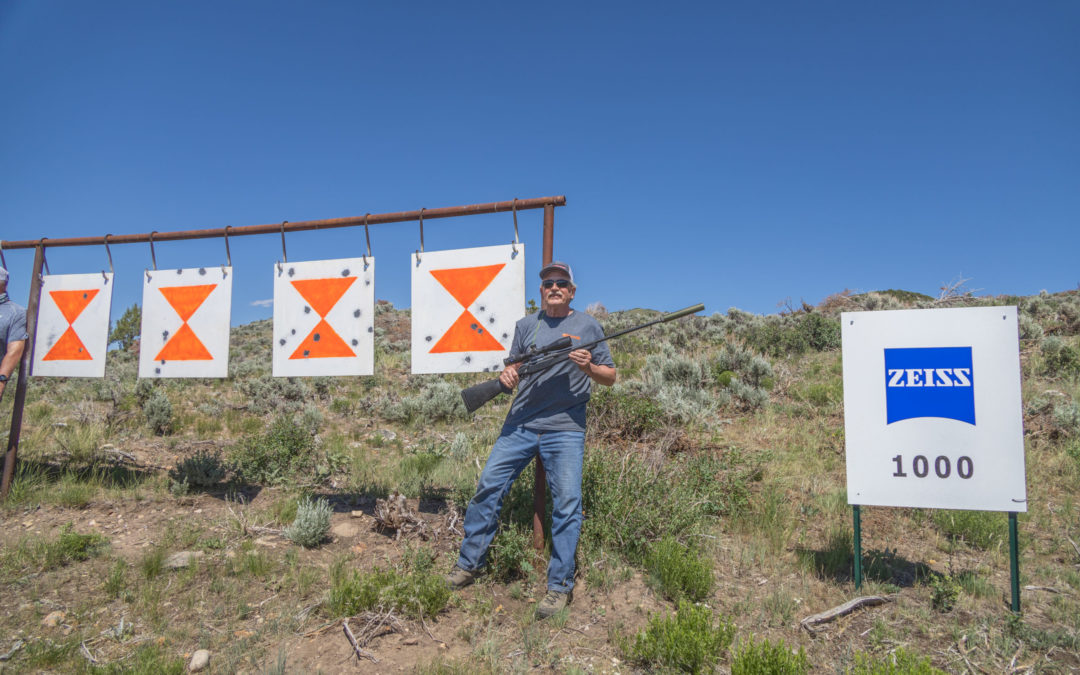Once upon a time, hunters and long range shooters had little overlap. Long range shooting guys tended to spend their time behind heavy guns, discussing the intricacies of ballistics and the art of wind-reading, while hunters worried about scent control, and ensuring their rifle was “minute of paper plate.” Those days, however, are long gone. Now, with hunters hiking further into the backcountry to fill ever-more sought-after tags, with ever-more expensive gear, the limits of ethical shooting have been pushed further than your grandad’s iron-sight .30-30 could ever have dreamed. As such, it’s become increasingly wise for hunters to consider the merits of learning a little more about long range shooting; after all, missing a tag that takes 15 years to pull hurts a little worse than missing a doe on the farm, and ensuring every shot has an ethical chance of being lethal should always be the paramount consideration for a responsible hunter.
Long Range Shooting: How Necessary is it Really?
While I can hardly speak for everyone, particularly in this more modern age, when I started hunting I knew two things: that my rifle could knock out an eye at 100 yards (I went a little beyond “minute of paper plate”), and that if there was a stiff wind, I should aim a bit into the breeze. Imagine my shock when my first chance at a deer stepped out at 405 yards, and I had never even considered that drop.
As it turns out, the story has a happy ending. My hunting mentor handed me his rifle, which he knew like the back of his hand, and gave me an estimate of the drop in inches. I squeezed the trigger, and my first doe was down. What I mostly gleaned from that hunt, however, was how little I actually knew, and how much I had overlooked in my preparation. While I had been shooting on the family range for my entire youth, all my targets were static, and my distances pre-figured. In the field, the environment was dynamic and the shot situation fluid. This sort of shooting would require a whole new know-how.
The Benefits of Long Range Shooting Training
This know-how, of course, is precisely what long-range training instills in students. To start with, students are not just given an in-depth familiarity with a rifle and scope system, but are taught how to achieve that familiarity with their own rifle, or any system they use in the future. The common ways to measure shot elevation–MOA and MRAD–are discussed, alongside the various reticles and turret options that allow a shooter to figure said drop, and the methods and tools which help a shooter ascertain target distance.
And that is just the beginning. When you step out onto the range, it becomes patently clear why all these inputs matter—important as they are, they are only the groundwork. Even once you have your mechanics dialed in and your dope card set, the environmental conditions step up to throw a wrench in things. Wind, of course, is a huge factor, and how to both read and deal with it is discussed and taught. Shot angle, often overlooked by the layman shooter, can easily cause a miss, and must be taken into account. Even such small details as elevation and humidity can cause hiccups, though those won’t come seriously into play unless you’re really pushing the distance. Then, of course, comes my favorite part. You often aren’t shooting prone, or off a bench in the field. Can you still shoot when you’re not in the perfect position?
Finding the Right Long Range Shooting School
Frankly, I could go on for another several pages about the intricacies and hunting benefits of long-range training, but as I haven’t nearly enough room to cover everything this entails, let me close with one final consideration. Finding a long-range shooting school appropriate to your interests is of prime importance. As mentioned, there are several popular styles of long-range shooting far removed from the sorts of practical skills hunting requires, and while you will certainly learn and benefit from a class with benchresters, the positives will not be nearly as great as from a class designed with long-range hunting in mind. Several schools have popped up around the country offering just this specialized blend of training, prime among them being Outdoor Solutions, which prides itself on tailoring its programs specifically to what hunters need to know. Wherever you decide to go, however, make sure you get some training behind the trigger before you pull it in the field. Your freezer will thank you.

